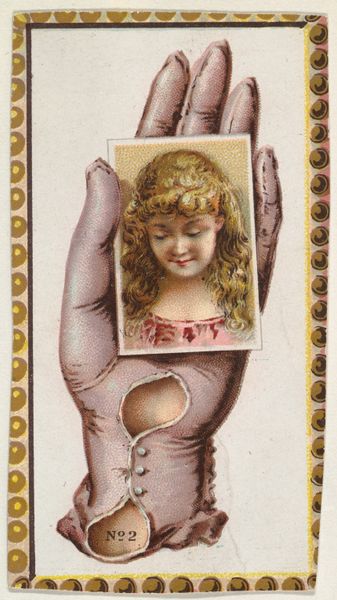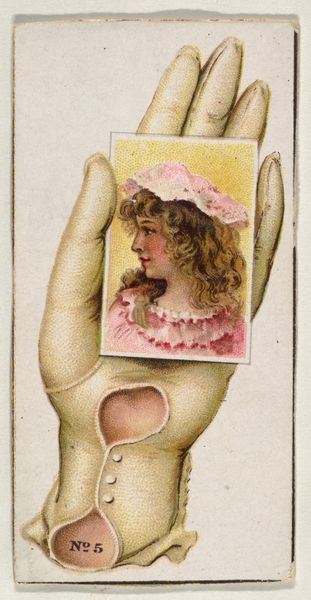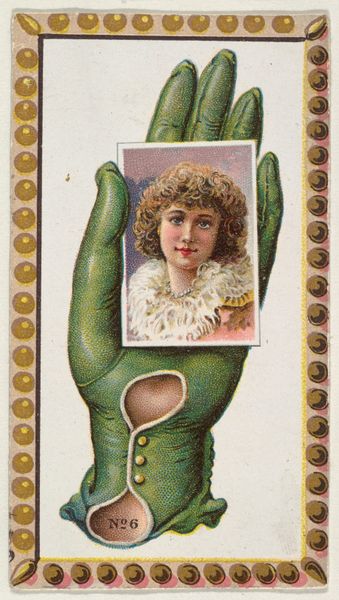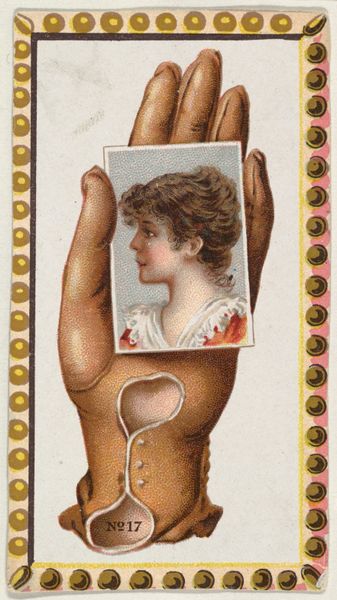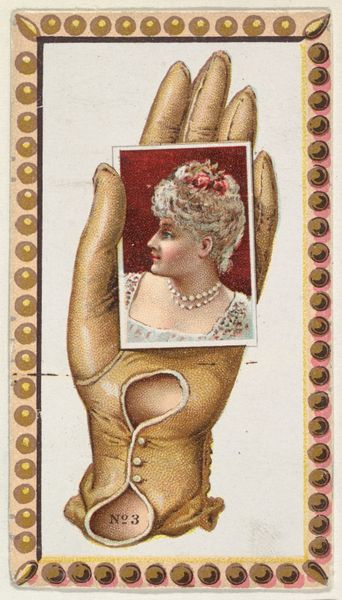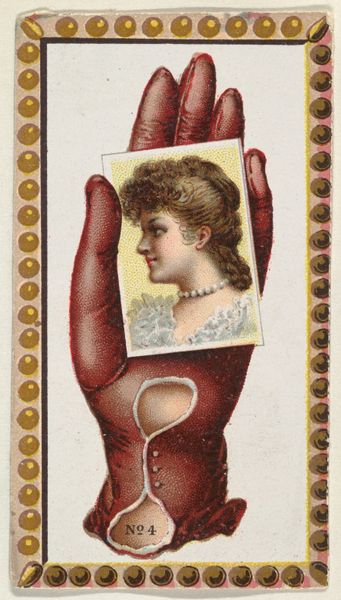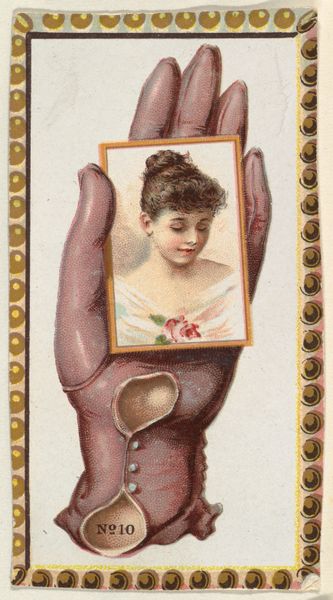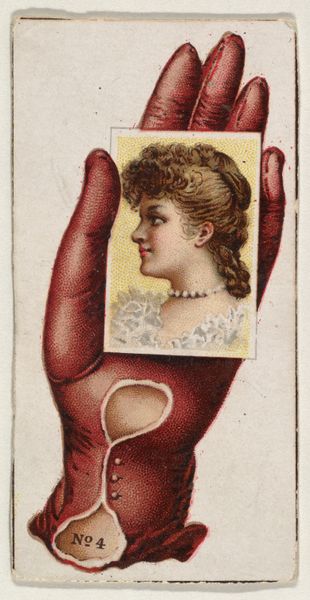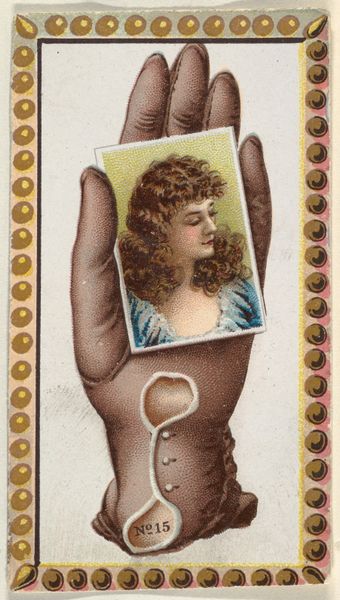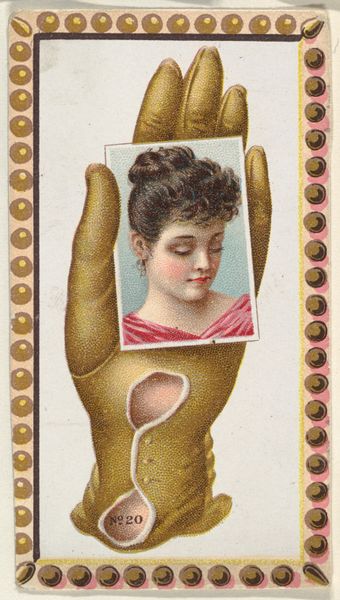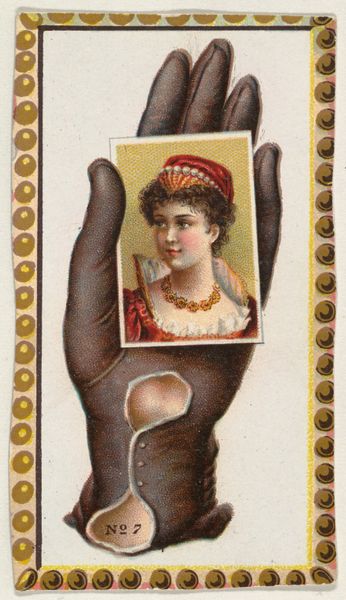
Card Number 5, cut-out from banner advertising the Opera Gloves series (G29) for Allen & Ginter Cigarettes 1885 - 1895
0:00
0:00
drawing, coloured-pencil, print
#
portrait
#
drawing
#
coloured-pencil
# print
#
caricature
#
coloured pencil
#
genre-painting
#
miniature
Dimensions: Sheet: 3 1/8 x 1 3/4 in. (8 x 4.5 cm)
Copyright: Public Domain
Curator: At first glance, there’s a certain delicacy to this tiny portrait. A miniature world framed by the whimsy of a gloved hand, wouldn't you say? Editor: Quite so. The Met houses "Card Number 5," a cutout from an advertisement for Allen & Ginter's Opera Gloves series for their cigarettes, dating roughly from 1885 to 1895. The mixed media combines drawing and print with colored pencil on paper, demonstrating a complex production chain. Curator: And what a peculiar subject! The advertisement itself is so meta—advertising gloves with…a portrait inside a glove. Is that some kind of trompe l'oeil commentary on high fashion or just plain cheeky? Editor: That interplay between image and object reveals interesting aspects of consumer culture. These cards were promotional inserts, aimed to increase brand awareness. High art miniatures mingled with the everyday act of smoking; this suggests a deliberate blurring of social boundaries. Curator: It certainly challenges the hierarchy of materials—the very stuff of labor is elevated and consumed along with aspirations of status. Plus, that number '5' prominently displayed, right where a pulse might beat. Such bold consumerist imagery—subverting the idea of a singular artwork into reproducible parts. Editor: Indeed! It speaks volumes about mass production and accessibility in the late 19th century. Think about it; lithography enabling color reproductions on such a small scale – it democratizes portraiture, even though attached to commodity exchange. Curator: But isn't it ironic that these miniatures intended for mass consumption now live inside museum glass cases? Does it highlight how objects, once ubiquitous, morph into relics infused with an entirely new significance? Editor: That transition absolutely informs how we perceive this "card" now. As an object that’s repurposed; something that moved between commercial value to artistic status in today’s museum context—it’s truly intriguing. Curator: Well, one thing is sure. After examining this artwork, the humble cigarette card appears quite multi-layered now. Editor: Exactly. By deconstructing it, we gained richer understandings that were far more than surface-level readings—challenging the assumptions that were at play in late 19th century popular and material culture.
Comments
No comments
Be the first to comment and join the conversation on the ultimate creative platform.
